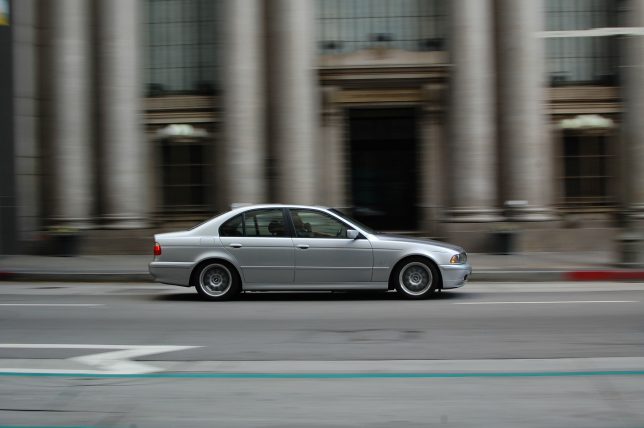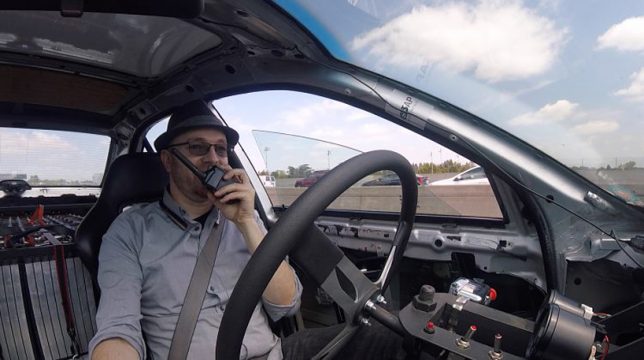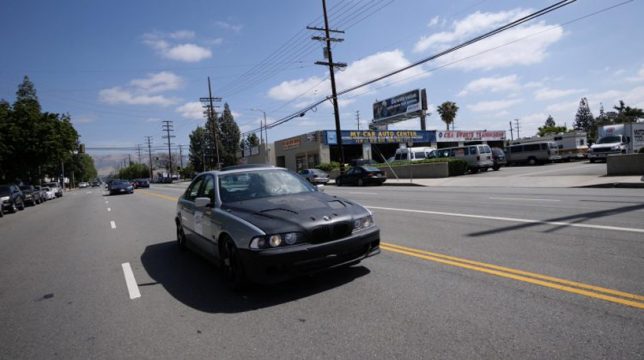 |
| Read on for a non-scientific look at the cost of switching from Canon to Sony. Note: you’ll need a lot more cash than shown here. |
The Sony a9 is here and with the ability to shoot 20 fps with AF-C, it’s likely to make a lot of sports photographers curious about switching to the Sony mirrorless system. We’re already impressed as heck. After all, it is meant to face off directly with the Canon 1DX II and Nikon D5.
We’ve talked about the structural considerations that may prevent some working pros from switching systems. But let’s imagine that those logistical concerns aren’t a problem, or you’re a freelance photographer who isn’t working with an employer’s supply of lenses. What would it actually cost in dollars and cents to switch systems?
We surveyed four Seattle photojournalists and found out what equipment they consider essential on assignments. Interestingly, their kits all consisted of a lot of the same gear and all four shoot Canon. Once we got a sense of what goes into a pro’s bag, we estimated what kind of money that kit might fetch if it were to be flipped. Finally, using our grand total, we looked at how much kit they could replace if they went Sony.
Before diving in, it is worth noting that switching brands is never a cost-effective move. And someone truly considering making the move from Canon to Sony, or Nikon to Canon, or Nikon to Sony, can assume a loss going in. Also all pricing estimates are current as of publishing, but are subject to change with time.
In the bag: the ideal kit
Below we’ve listed out a sports photography kit based on our feedback from working photojournalists. All four photographers shoot with two bodies minimum, and occasionally use a third. Interestingly, none have upgraded to the Canon EOS-1D X Mark II or 5D Mark IV, though for the ‘Value if purchased new,’ column we used the price of the latest version of each camera, since that’s what they’d likely buy, if anything needed replacing.
We look to used camera retailer KEH for pricing estimates. Note: selling used gear is not an exact science – you might be able to get more or less depending where you sell – but KEH tends to be a good industry standard. And for the sake of simplicity, we assumed all gear is in well-used but working condition (KEH calls this category ‘Excellent,’ just below ‘Excellent Plus’ and ‘Like new minus’). Below we’ve broken down the payout for the whole haul of gear, plus the cost if purchased new for comparison.
| |
Estimated value on KEH (w/ accessories) |
Value if purchased new |
| Canon 1DX (x2) |
$ 2000 x2 |
$ 6000* x2 (1DX II)
|
| Canon 5D Mark III |
$ 1200 |
$ 3500* (5D IV)
|
| Canon 35mm F2 IS |
$ 275 |
$ 550 |
| Canon 85mm F1.8 |
$ 200 |
$ 350 |
| Canon 135mm F2 |
$ 500 |
$ 1000 |
| Canon 16-35mm F2.8 III |
$ 1030 |
$ 2000 |
| Canon 24-70mm F2.8 |
$ 435 |
$ 1700* (version II) |
| Canon 70-200 L IS II |
$ 1030 |
$ 1900 |
| Canon 300mm F2.8 IS II |
$ 2950 |
$ 6100 |
| Canon 580 EX II |
$ 140 |
$ 480* (600EX) |
| Canon LP-E6N battery (3) |
$ 0 |
$ 65 x3 |
| Canon LP-E4N (2) |
$ 30 x2 |
$ 165 x2 |
| Grand total: |
$ 11,820 |
$ 30,105 |
*This number reflects the price of upgrading to the latest version of each piece of gear
Wowza that’s a lot of kit. For the most part we’re looking recouping less than half the new value for each lens sold used (ouch!). So with $ 11,820 in pocket, how much kit could be bought back in Sony gear? Read on…
Making the switch
It isn’t completely fair to price it out what previously was used equipment against brand new Sony gear. So to make things more even, we’ve included new and used prices where applicable.
“There is no exact replacement for each
piece of kit.”
Also important: the Sony FE system is nowhere near as vast as the Canon EF lens family and as such, there are not exact replacements for each piece of kit, something you can read more about in our recent article Sony a9: Why being better might not be enough.
One example of this: all four photographers mentioned using a prime tele – either a 300mm F2.8 or 400mm F2.8 (we used the former in our example). Sony does not yet have a 300mm F2.8 – the closest lens they make is the new 100-40mm F4.5-5.6, which is far from a perfect substitute. We’ve included it in our chart below, but this lack of long primes is certainly something that may keep sports shooters from switching.
| Equivalent Sony gear |
Estimated price new |
Estimated price used if applicable |
| Sony a9 (x2) |
$ 4500 x2 |
n/a |
| Sony a7II |
$ 1550 |
$ 1200 (Ebay) |
| Sony 35mm F2.8 |
$ 800 |
$ 620 (KEH) |
| Sony 85mm F1.8 |
$ 600 |
n/a |
| Sony Zeiss Batis 135mm F2.8 |
$ 2000 |
n/a |
| Sony 16-35mm F4 ZA OSS |
$ 1350 |
$ 790 |
| Sony 24-70mm F2.8 GM |
$ 2200 |
$ 2000 (KEH) |
| Sony 70-200mm F2.8 GM |
$ 2600 |
n/a |
| Sony 100-400mm GM |
$ 2500 |
n/a |
| Sony HVL-F60M flash |
$ 550 |
n/a |
| Sony a9 vertical grip |
$ 350 x2 |
n/a |
| Sony NPFW50 battery (3) |
$ 50 x3 |
n/a |
| Sony a9 battery (2) |
$ 80 x2 |
n/a |
| Grand total: |
$ 24,160 |
$ 22,870 |
Full system switch
Using our example, the cheapest one could go full-on Sony, with most of the same kit is $ 22,870. After applying the $ 11,820 discount from having sold off all the Canon equipment, a photojournalist would still have to cough up about $ 11,050 to make the switch. Or they could simply take that $ 11,820 and buy a couple of a9 bodies and maybe a lens.
“A photojournalist would still have to cough up about $ 11,050 to make the switch.”
But wait…
Although there’s a drop in performance and features when using Canon glass on a Sony a9 with adapter, for some photographers this lower performance level may still be sufficient (at least in the short term). In that case our photojournalists would only need to switch their cameras, batteries and flashguns.
Just swap the bodies
Two Sony a9 bodies with grips, and a used a7 II with batteries and flash would cost about $ 11,760 plus another $ 800 for two metabones adapters bringing the grand total to: $ 12,560. If our photojournalists were to sell their Canon bodies and accessories to KEH, it would put $ 5,400 in their pocket, meaning they’d have to shell out about $ 7,160 to make the switch. This doesn’t sound quite so bad. Another option would be to simply switch one body for the Sony a9 to get the fast burst rate, and hang onto the rest of the gear.
“Another option would be to simply switch one body for the Sony a9 to get the fast burst rate, and hang onto the rest of the gear.”
On the other hand, if or when our photojournalist upgrades to the latest versions of their camera bodies – having sold their current models and used the cash to step up – it would cost $ 10,300 to make the upgrade to two 1DX II and a 5D IV, so that cost is probably waiting for them at some point down the line.
Notably, if they were starting fresh with a new system, the cost of entry is somewhat similar: $ 30,105 for the full kit in Canon and $ 24,160 for the kit in Sony. However, these numbers are skewed by the fact that we are comparing a $ 6100 Canon tele prime to a $ 2500 Sony tele zoom. If we ignore those two, the price difference is even closer: $ 24,005 for the Canon sports kit and $ 21,660 for the Sony.
The takeaway
Switching systems is a headache and sports photography gear is crazy expensive. Like cars, cameras lose a lot of value as soon as they go from ‘new’ to ‘used’ condition – essentially, as soon as you take them home from the store. Not for nothing are most pro photographers familiar with the concept of depreciation from their tax returns.
It’s hard to say whether sports photographers or publications out there are considering making a switch to the Sony system with the introduction of the a9. The four photojournalists we spoke with all seemed intrigued by what it offers, though. Whether they’d actually considering switching is another story.
“Switching systems is a headache and sports photography gear is crazy expensive.”
One thing is for certain: Sony is pushing deep into territory previously only inhabited by Canon and Nikon and it is only a matter of time before making the switch to mirrorless doesn’t seem so crazy – even for pro sports shooters. Then again, the camera is only one part of the equation. A 20 fps bursts with continuous AF and no black out seems nice, but if you don’t have the right glass for the job, that spec won’t get you far.
Articles: Digital Photography Review (dpreview.com)
























You must be logged in to post a comment.